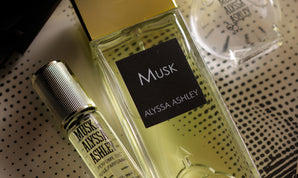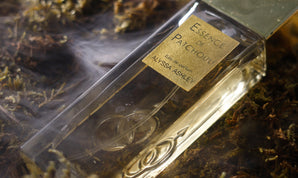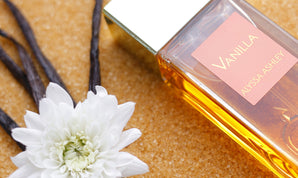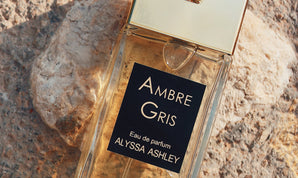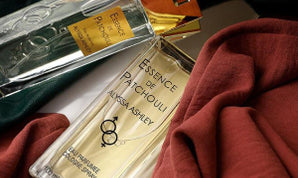For many centuries, historically known as "dark" but not so much culturally, figurative art has taken on a strictly educational and ceremonious role. Even the most religious representations had as a priority to narrate, tell and teach populations and those of faith.
Today, the communal and social purpose of art has been replaced by a more intimate and personal one, although the art of social and political criticism has found a flourishing sector in recent years.
You may be wondering: what is the relationship between perfume and the educational function of art? The association was a must.
In the fruitful exchange and crossover between the art of perfumery and that of figurative art, my attention was drawn to an artistic experiment that’s not very well known but has a strong visual impact: David Hockney's "Joiners", was created using a photocollage.
The works, as I will show you in a moment, have the ability to take the artist out of his classical perceptive scheme, only for a moment, and pushes him to look at things from another (or better) point of view.

This operation of extracting and innovating is exactly what I have always been doing throughout my history of perfume creation, but with the launch of the Tribute to Musk collection I wanted to make it even more special. My name is very closely linked to this iconic fragrance, and why it is by default linked to well-defined concepts: familiarity, unisex, rebellion, sensuality.
We can say that Musk is all of the above, and much more. But most importantly, Musk is all this at once: a fragrance with a recognizable olfactory imprint but also a fragrance suitable for everyday use, a fragrance "that smells clean" - as many like to remember - but also sensual, a fragrance linked to the sphere of memory and affection but remains contemporary.
When you choose Amber Musk you are wearing many fragrances, personalities, characteristics at the same time. I invite you to go beyond the idea you have of this perfume and let yourself be surprised by its facets, by its combinations, the same way Hockney did, as well as how the brand Alyssa Ashley does with its’ Tribute to Musk line, specifically Amber Musk.
David Hockney
Known as the greatest artist of British pop art, the artist, born in 1937 and still alive, is not easily framed within a single movement or artistic movement (after all, that's the beauty of art!), especially because he dabbled in the most diverse artistic techniques: from painting to photography, from drawing to engraving, to set design and design.
However, it was painting that brought him closer to art (he always pursued artistic studies, even in a controversial and unconventional way) and later made him known on a global level. If you don't know him and you simply search for his name on the image search engine, you can get an immediate idea of his style: large canvases with bright colors and acrylics, almost shiny, static figures, hieratic, large fields of flat color and lots and lots of California sun.
But wasn't he British? Sure, but attracted by the artistic ferment of the United States and simultaneously fascinated by the colors of pop art, he decided to move in 1964 to Los Angeles, California. In his most famous paintings elements such as water, sky, palm trees, swimming pools seem to speak of a relaxed life, in the warm sun of the south of the United States, where the times are marked by swimming in the pool and social parties. The truth, as it so often happens, is quite different.
The melancholy underlying David Hockney's works is not an isolated element but only obliterated by the bright and full colors. In the painting Portrait of an Artist (Pool with two figures) the standing figure (Peter Schlesinger, the artist's former companion) observes the swimming figure approaching him. It is nothing but a depiction of the end of the relationship between the two artists.
More water, more pools, in the painting The Splash, perhaps the artist's most famous work, a very blue sky meets a very blue water in which a spray of white foam communicates the past presence of a person, the absence, the transience of time.
Between Polaroid, Cubism and Futurism
At the beginning of the '80s, after having rented a "house" in the Hollywood Hills, he put aside his paintbrush for a few years, fascinated by photography. The love was intense, but short, so the artist quickly returned to practice painting with the same consistency as before.
However, this short break was important especially because of the results it brought. In fact, Hockney began a series of collages in which the subject was photographed from different points of view and broken down into sections as if they were pixels.
What resulted was an image that was comprehensible as a whole, in the sense that the subject was identifiable, but misleading. What struck me about these works is the need to linger a little longer on the images to be able to grasp the details, as if the superficial overview alone was not enough.
Inevitably, there are links to the experiences of Cubism and especially of Synthetic Cubism from which it takes the concept of material collage and in some cases the technique of assembly. In fact, the artist himself said that one day, in his living room at home, he had the idea of taking 6 polaroids of 6 details from different perspectives and assemble them with vinyl glue to turn them into a single block of matter. In this way, the viewer would not see David's living room but his "6 living rooms", as if they were his 6 different, tangible, textural identities, very close to the previous ones of Juan Gris.
But it is not only cubism that inspired David that in his "joiners", and unlike his other paintings, he began to study the movement. Now futurism is the artistic movement that is immediately brought to mind.
The multiple legs of the dog in "Dynamism of a dog on a leash" by Giacomo Balla wants to represent through a motionless technique such as painting the movement and instead the British artist gives movement to still images (objects, posed people, landscapes) through the superimposition, which reminds just those of Balla.
David Hockney and Alyssa
The image of my Amber Musk is inspired by joiners.
The facets are many as are its identities. The base of Musk, of which this perfume is one of the tributes, and the combination with ambergris make it a perfume that lingers on for a long time, to smell over and over again, it's versatile. Just like David Hockney's polaroid mosaics, it is necessary to have a different point of view on things and never dwell only on the first impression because beyond this, there can be something special.
